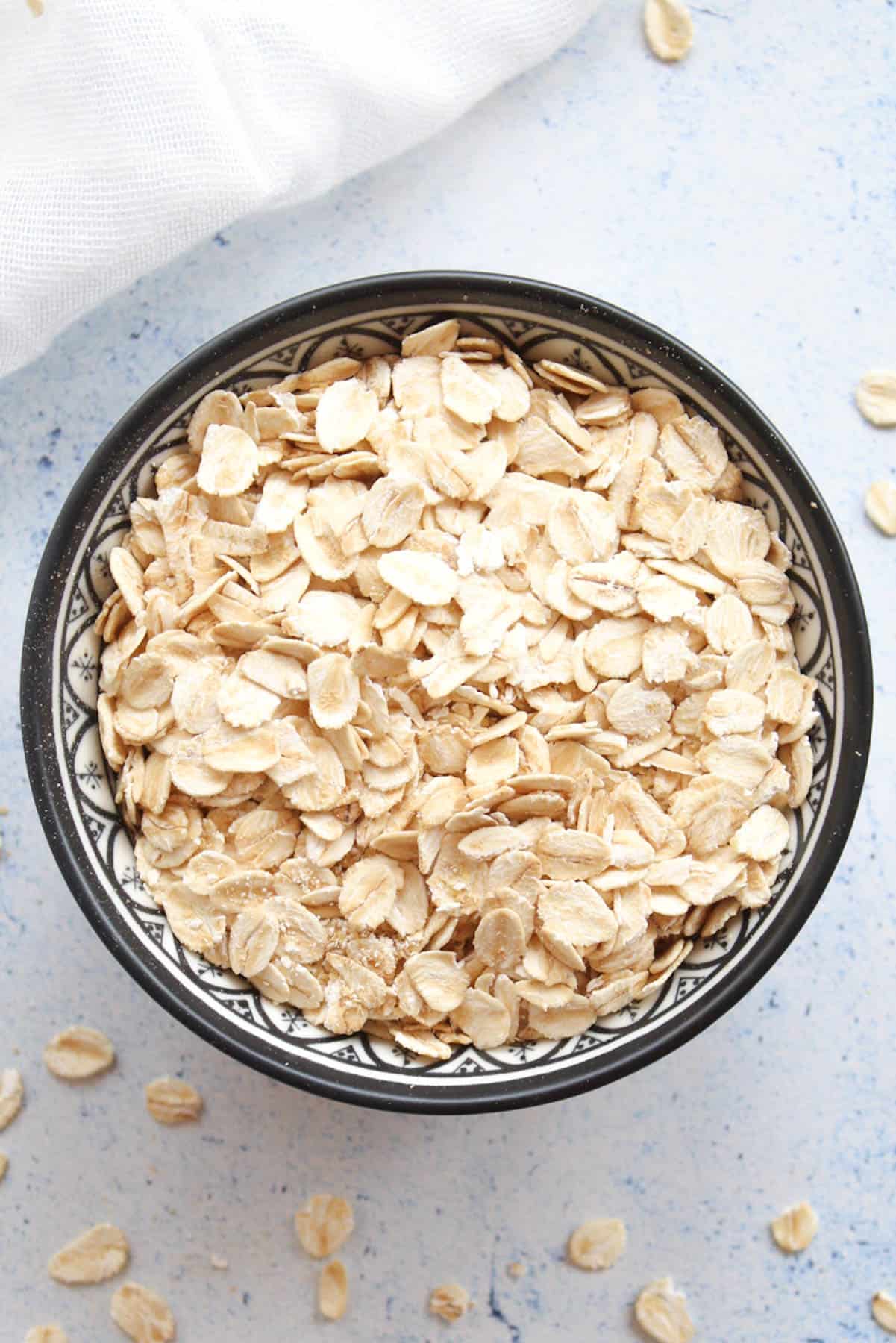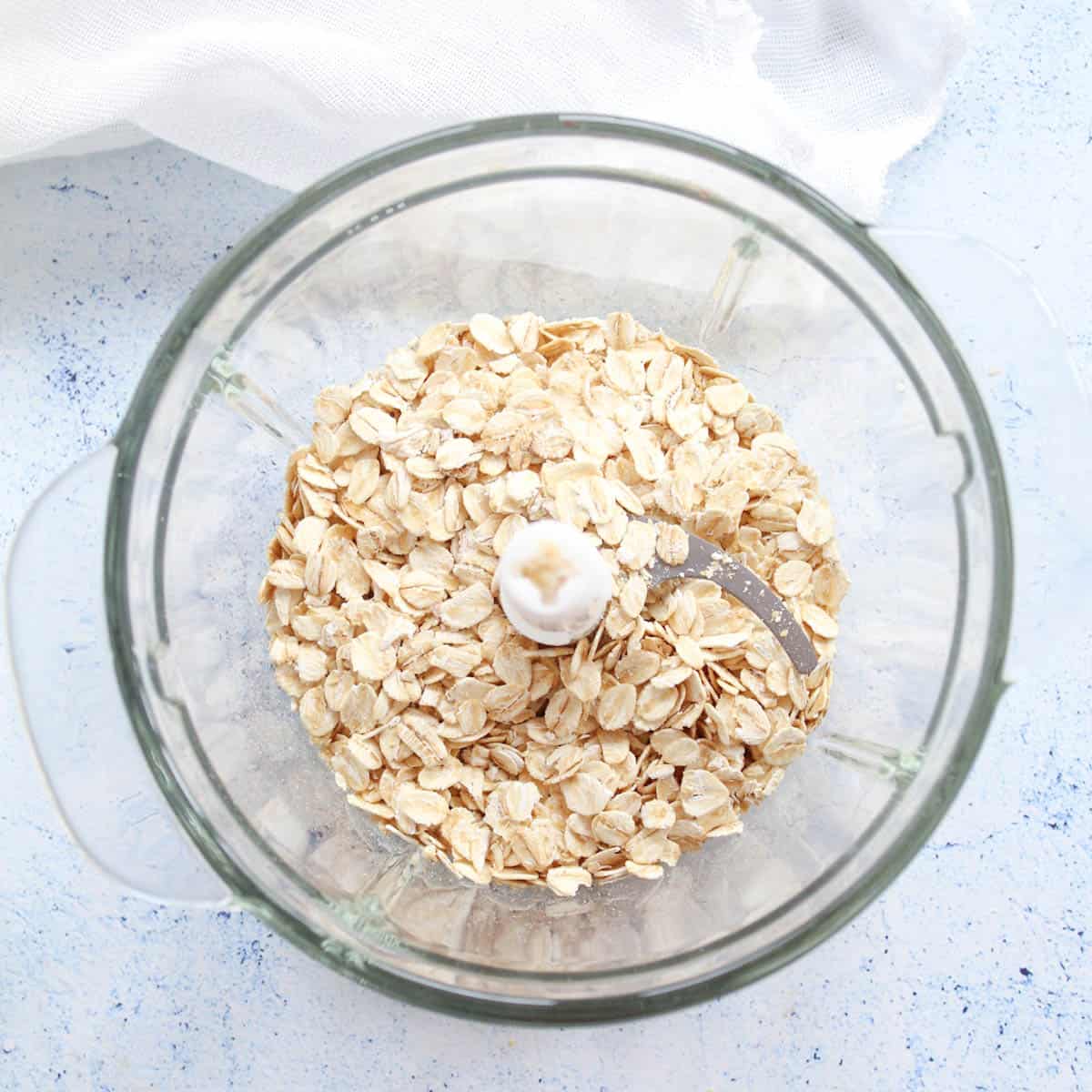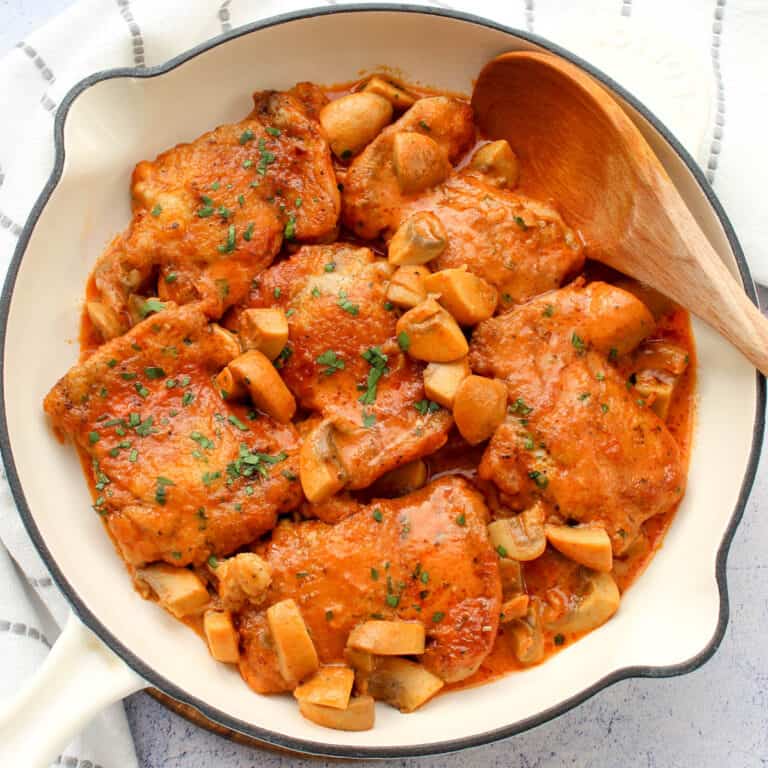How to make oat flour at home
This post contains affiliate links
You might be surprised to learn that you can easily make oat flour at home. All you need are some rolled oats and a high-speed blender. Let’s do it!

Oat flour is one of my go-to gluten-free flour and it is most certainly always stored in my pantry. Oat flour is naturally gluten-free and is a great replacement for wheat flour in many recipes.
The best part is that I can make it at home any time I need it by just blending some rolled oats in a high-speed blender.
Is oat flour gluten-free?
Oat flour is naturally gluten-free, but it depends on how it is processed. While oats themselves are naturally gluten-free, they are often processed alongside gluten-containing grains like wheat, barley, and rye, leading to potential cross-contamination.
If you want to make sure your oats are gluten-free, look for “certified gluten-free.” This certification means that the oats were grown, harvested, processed, and packaged in a way that prevents them from coming into contact with gluten-containing grains.
Certified gluten-free oat flour is the best choice among individuals with gluten sensitivities or celiac disease. I always check the packaging to confirm the gluten-free certification before using oats in my gluten-free recipes.
A word of caution
Some individuals with celiac disease may have a sensitivity to oats, even if the oats are labeled as gluten-free. The reason behind this lies in the protein composition of oats.
Oats naturally contain a protein called avenin, which is structurally similar to gluten. While avenin is not the same as the gluten found in wheat, barley, and rye, some individuals with celiac disease might still react to it.
You can read more about avenin on the Beyond Celiac website, a great resource for anyone who is following a gluten-free diet.
FACT: Did you know that gluten-free oats are called wheat-free oats in Australia?

How to make oat flour at home
Now that we have spoken about whether oat flour is safe for people with gluten sensitivities let’s dive into how we can make it at home.
- Creating oat flour at home is incredibly simple! You just require whole rolled oats (not steel-cut or quick oats) and either a food processor or a high-speed blender, I use my trusted Thermomix.
- Add the oats to the blender or food processor and blend until they turn into fine flour, pausing occasionally to stir.


And there you have it! You can now use it in any recipe that requires oat flour.

How to store it
To store your homemade oat flour, simply transfer it into an airtight container, preferably glass or plastic, ensuring the lid is tightly sealed to prevent moisture.
Store the container in a cool, dry spot in your pantry, away from direct sunlight. When stored properly, your homemade flour will stay fresh and ready to use in your recipes for several months.
Frequently asked questions
Oat flour cannot be substituted 1:1 for all-purpose flour in all recipes, especially those that rely on gluten for structure, such as bread or cakes. Unfortunately, it lacks gluten, a protein found in wheat-based flour, which affects the texture and rise of baked goods.
I found that whole rolled oats, also known as old-fashioned oats, produce the best results. Whole rolled oats are steamed and then flattened with large rollers, preserving their nutrients and making them ideal for grinding into flour.
Steel-cut oats, on the other hand, have a dense and coarse texture, making them less suitable for turning into flour without specialized equipment. Quick oats, which are pre-cooked and then rolled thinner than old-fashioned oats, can also be used for oat flour, but they might result in a slightly different texture in your recipes.
One cup of whole rolled oats produces approximately 3/4 cup of flour.
How to use oat flour
It can be used in countless ways. Here are a couple of ideas for you to explore:
- Pancakes: Oat flour is great for making pancakes. It adds a nutty flavor and a slightly denser texture and tastes delicious. Make sure to try my easy oat flour pancakes recipe.
- Muffins and Quick Bread: Oat flour can add moisture and provide a wholesome flavor to muffins and quick bread.
- Cookies: Oat flour can contribute to a chewy texture in cookies and is often used in recipes like oatmeal cookies. I used it to make my no-bake gluten-free cookies.
- Thickening Soups and Sauces: Oat flour can be used as a gluten-free thickener for soups, stews, and sauces.
- Coating for Frying: Oat flour can be used as a coating for frying, providing a crispy texture.
- Energy Bites and Bars: It is often used in no-bake energy bites and granola bars, providing a nutritious base.
More favorite oat recipes
If you like oats, make sure to explore my overnight oats, they make a great nutritious and, delicious breakfast:
Do you have a favorite recipe using oat flour? Whether it’s a pancake stack, cookie batch, or any other dish, drop your favorite recipes in the comments below. I love hearing from you 🍽️✨

How to make oat flour at home
Ingredients
- 1 cup whole rolled oats (gluten-free if necessary)
Instructions
- Prepare the Oats: Measure out 1 cup of whole rolled oats. Ensure they are gluten-free if you need the oat flour to be entirely gluten-free.
- Blend the Oats: Transfer the oats to a high-speed blender or a food processor. Blend on high until the oats turn into a fine, flour-like consistency. This process might take about 1-2 minutes.
- Check the Texture: Pause blending occasionally to check the texture. The oat flour should be smooth without any coarse or gritty particles.
- Sieve (Optional): If you prefer an extra fine texture, you can sift the oat flour through a fine mesh sieve to remove any larger particles.
- Store: Transfer the oat flour to an airtight container. Seal it well to prevent moisture. Store in a cool, dry place.
- Now your homemade oat flour is ready to use in your favorite recipes. Enjoy baking!
Notes
- Best Oats for Making Flour: Whole rolled oats (also known as old-fashioned oats) are the best choice for making oat flour. They are steamed and flattened, preserving their nutrients and making them ideal for grinding into a fine flour texture.
- Avoid Steel-Cut Oats: Steel-cut oats have a dense and coarse texture, making them less suitable for grinding into flour without specialized equipment.
- Consider Quick Oats: Quick oats can be used for oat flour, but they are pre-cooked and rolled thinner, which might slightly alter the texture of your recipes. If using quick oats, be mindful of the potential change in consistency.
- Storage Instructions: Transfer the oat flour into an airtight container, ensuring the lid is tightly sealed to prevent moisture. Store the container in a cool, dry pantry or cupboard away from direct sunlight. When stored properly, homemade oat flour can last for several months.





